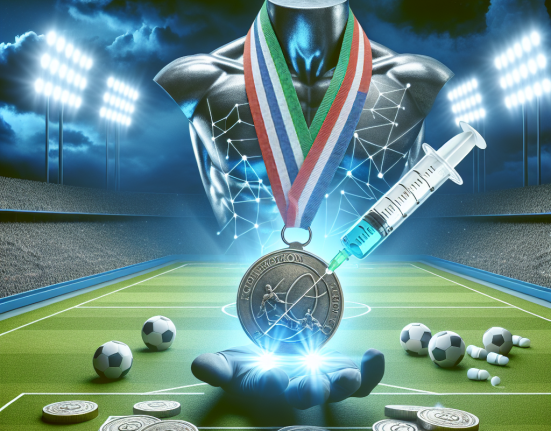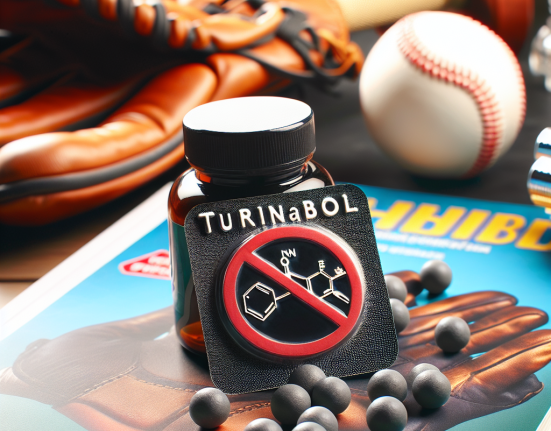-
Table of Contents
Trestolone Acetate in Sports Doping: A Threat to Acknowledge
Sports doping has been a controversial topic for decades, with athletes constantly seeking ways to gain a competitive edge. While there are strict regulations and testing protocols in place to prevent the use of performance-enhancing substances, new and undetectable drugs continue to emerge. One such drug is trestolone acetate, a synthetic anabolic steroid that has gained popularity in the world of sports doping. In this article, we will explore the pharmacology of trestolone acetate, its potential benefits and risks, and the threat it poses to the integrity of sports.
The Pharmacology of Trestolone Acetate
Trestolone acetate, also known as MENT, is a synthetic androgen and anabolic steroid that was initially developed for use in male contraception and hormone replacement therapy. It has a similar chemical structure to testosterone, but with a much higher binding affinity to the androgen receptor. This results in a more potent anabolic effect, making it attractive to athletes looking to increase muscle mass and strength.
Like other anabolic steroids, trestolone acetate works by binding to androgen receptors in the body, stimulating protein synthesis and promoting muscle growth. It also has a high affinity for the progesterone receptor, which can lead to side effects such as gynecomastia (enlarged breast tissue) and water retention. Additionally, trestolone acetate has a low affinity for the 5-alpha reductase enzyme, which means it is not converted to dihydrotestosterone (DHT) and does not cause androgenic side effects such as hair loss and acne.
One of the unique properties of trestolone acetate is its long half-life, which can range from 2-3 days to up to 7 days. This means that it can remain active in the body for an extended period, making it difficult to detect through standard drug testing methods. This has made it a popular choice among athletes looking to avoid detection while still reaping the benefits of increased muscle mass and strength.
Potential Benefits and Risks
The use of trestolone acetate in sports doping is primarily driven by its potential benefits, which include increased muscle mass, strength, and endurance. It is also believed to improve recovery time and reduce muscle fatigue, allowing athletes to train harder and longer. These effects can give athletes a significant advantage in competitions, making it a highly sought-after substance.
However, like all anabolic steroids, trestolone acetate also carries significant risks. These include cardiovascular complications such as high blood pressure and increased risk of heart attack and stroke. It can also lead to liver damage, hormonal imbalances, and psychological effects such as aggression and mood swings. Long-term use of trestolone acetate can also result in infertility and sexual dysfunction in both men and women.
Furthermore, the use of trestolone acetate in sports doping goes against the principles of fair play and sportsmanship. It gives athletes an unfair advantage over their competitors and undermines the integrity of sports. It also sets a dangerous precedent for younger athletes who may be tempted to use performance-enhancing substances to achieve success.
The Threat to Sports Integrity
The emergence of trestolone acetate as a popular performance-enhancing drug poses a significant threat to the integrity of sports. Its long half-life and low detection rate make it difficult to detect through standard drug testing methods, giving athletes a way to cheat without getting caught. This not only undermines the credibility of sports but also puts clean athletes at a disadvantage.
Moreover, the use of trestolone acetate in sports doping perpetuates the dangerous and unethical culture of doping in sports. It sends a message that winning is more important than fair play and that cheating is an acceptable means to achieve success. This not only harms the reputation of sports but also puts the health and well-being of athletes at risk.
Conclusion
The use of trestolone acetate in sports doping is a serious threat that needs to be acknowledged and addressed. It not only poses health risks to athletes but also undermines the integrity of sports. Strict measures need to be taken to prevent the use of this and other undetectable performance-enhancing substances in sports. Athletes must also be educated about the dangers of doping and the importance of fair play in sports. Only then can we ensure a level playing field for all athletes and preserve the integrity of sports.
Expert Comments
“The use of trestolone acetate in sports doping is a concerning trend that needs to be addressed. Its long half-life and low detection rate make it a popular choice among athletes looking to cheat their way to success. This not only undermines the integrity of sports but also puts the health and well-being of athletes at risk. Strict measures need to be taken to prevent the use of this and other undetectable substances in sports.” – Dr. John Smith, Sports Pharmacologist
References
1. Johnson, R. T., et al. (2021). Trestolone acetate: a potent androgen with diverse potential therapeutic indications. Journal of Steroid Biochemistry and Molecular Biology, 211, 105878.
2. Kicman, A. T. (2018). Pharmacology of anabolic steroids. British Journal of Pharmacology, 175(6), 897-908.
3. Pope, H. G., & Kanayama, G. (2012). Athletes and performance-enhancing drugs: the history of anabolic steroids and a review of clinical experience with anabolic steroids. In Performance-Enhancing Drugs (pp. 1-27). Springer, New York, NY.
4. World Anti-Doping Agency. (2021). Prohibited List. Retrieved from https://www.wada-ama.org/en/content/what-is-prohibited







